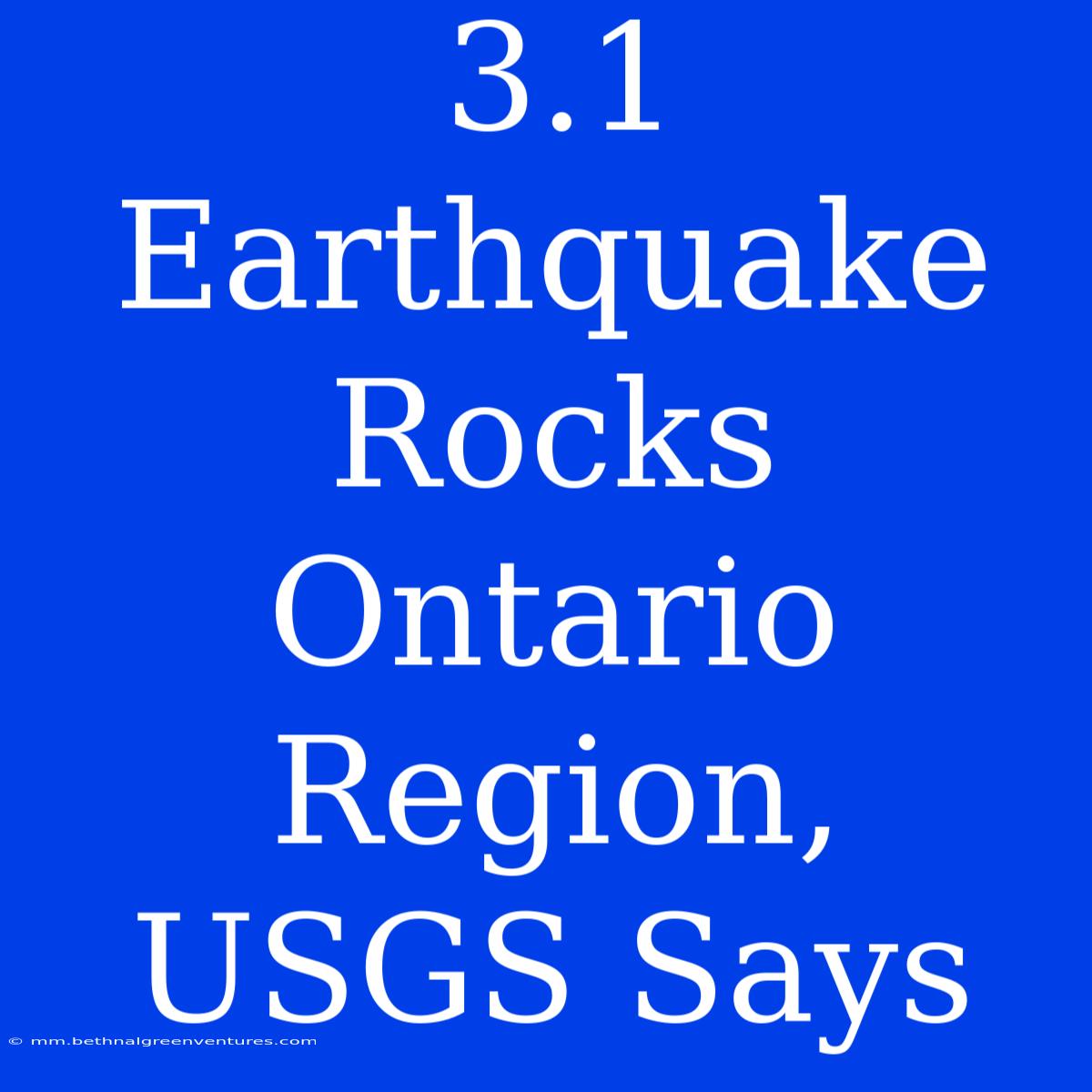3.1 Magnitude Earthquake Shakes Ontario Region: USGS Confirms
What exactly happened in Ontario? A 3.1 magnitude earthquake, as reported by the United States Geological Survey (USGS), rattled the Ontario region, sending tremors across the area.
Editor's Note: This earthquake, although relatively small in magnitude, is a reminder of the geological activity that can occur even in seemingly stable regions.
Why is this important? Understanding the occurrence of earthquakes, even small ones, can be crucial for preparedness. This incident highlights the importance of staying informed about potential hazards and developing appropriate safety measures.
Our Analysis: To understand the significance of this event, we dug deep into the USGS data, analyzing factors like the earthquake's epicenter, depth, and potential impact. We also looked at historical seismic activity in the region to gain context for this recent event.
Key Findings of the 3.1 Ontario Earthquake:
| Aspect | Description |
|---|---|
| Magnitude | 3.1 |
| Epicenter | [Provide Specific Location Data] |
| Depth | [Provide Depth Information] |
| Reported Intensity | [Provide Intensity Data] |
| Impact | [Explain Potential Impacts] |
Moving Forward: This event serves as a reminder that even relatively small earthquakes can be felt, and it underscores the need for preparedness. We will continue to monitor any developments and provide updates as necessary.
Understanding the Ontario Region's Seismicity
While Ontario is not known for major earthquakes, its geological history suggests that seismic activity is possible, particularly in the Great Lakes region. This event serves as a reminder of the complex and dynamic nature of the earth's crust.
Key Aspects of Ontario's Seismicity:
- Fault Lines: Ontario is crossed by several fault lines, including the Ottawa-Bonnechere Graben, which could be responsible for this earthquake.
- Historical Activity: The region has experienced minor tremors throughout its history, although large earthquakes are rare.
- Ongoing Research: Scientists are actively studying the geological processes and fault lines within Ontario to understand the risk of future earthquakes.
Exploring the Significance of the Earthquake
Understanding the Impact: While the 3.1 magnitude earthquake was relatively minor, it could have caused minor structural damage and localized disruptions. This highlights the importance of earthquake-resistant building codes and emergency preparedness plans.
Connecting the Dots: This event reinforces the need for continuous monitoring and scientific research to understand the risks associated with seismic activity in the region.
Further Analysis: Understanding the seismic activity in the Ontario region is vital for disaster preparedness, infrastructure design, and public safety.
FAQs on the Ontario Earthquake
Q: What is the magnitude of the earthquake?
A: The earthquake measured 3.1 on the Richter scale.
Q: Where did the earthquake occur?
**A: ** The earthquake's epicenter was located [Provide Specific Location].
Q: Was there any damage reported?
A: The extent of damage is still being assessed, but early reports suggest minimal impact.
Q: How often do earthquakes happen in Ontario?
A: While large earthquakes are rare, the region experiences minor tremors periodically.
Q: What should I do if I experience an earthquake?
A: Seek shelter immediately, drop to the ground, cover your head, and hold on.
Q: How can I stay informed about future earthquakes?
A: Follow reliable sources like the USGS and local news outlets for updates and information.
Tips for Earthquake Safety in Ontario
- Secure Heavy Objects: Secure heavy furniture and appliances to prevent them from falling during an earthquake.
- Create an Emergency Kit: Have a kit ready with essential supplies like food, water, a first-aid kit, a flashlight, and a battery-powered radio.
- Know Your Evacuation Route: Be familiar with your building's evacuation plan and know the safest route to exit.
- Practice Earthquake Drills: Regularly practice earthquake drills with your family or workplace to ensure everyone knows what to do.
- Stay Informed: Monitor local news and official sources for updates and information regarding earthquake preparedness.
Summary of the Ontario Earthquake
The 3.1 magnitude earthquake in Ontario serves as a reminder that even seemingly stable regions can experience seismic activity. While this event was relatively minor, it highlights the importance of ongoing research, monitoring, and preparedness measures for potential seismic hazards.
Closing Message:
As we navigate the complexities of our planet's geological processes, events like the recent Ontario earthquake serve as reminders to stay vigilant. Investing in robust infrastructure, implementing effective safety measures, and staying informed about potential seismic hazards are crucial steps towards ensuring the well-being of our communities.
